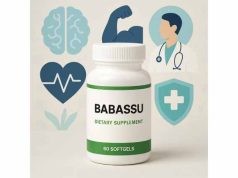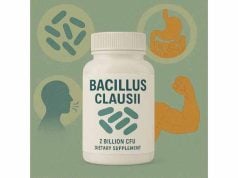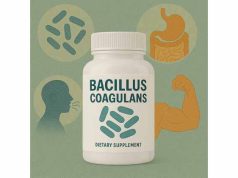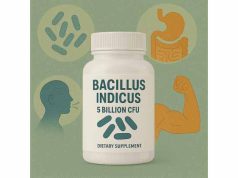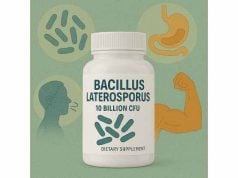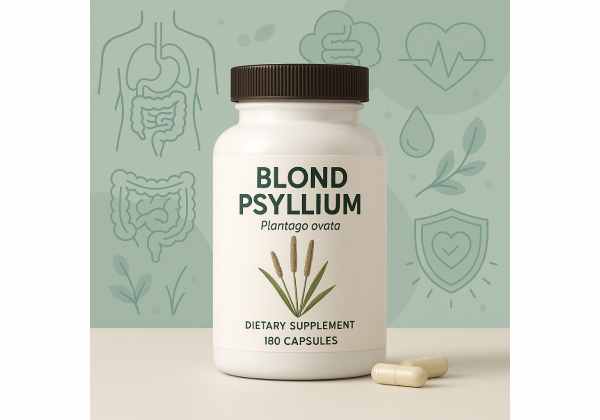
Blond psyllium is a natural fiber supplement derived from the seeds and husks of the Plantago ovata plant. Widely recognized for its gentle yet effective impact on digestive health, blond psyllium is a go-to remedy for constipation, irregular bowel movements, and supporting heart health. Its ability to absorb water and swell into a gel-like substance helps to soften stool, promote regularity, and feed beneficial gut bacteria. More than just a laxative, blond psyllium is valued for lowering cholesterol, supporting healthy blood sugar levels, and even assisting with weight management. This comprehensive guide will help you discover what makes blond psyllium unique, how it works, its diverse benefits, best practices for use, and important safety tips to know.
Key Takeaways
- Blond psyllium is a natural fiber supplement known for improving digestive regularity and gut health.
- Helps lower cholesterol and maintain healthy blood sugar, supporting heart and metabolic wellness.
- Safe for most people when used as directed, but must be taken with plenty of water to avoid blockages.
- Used for constipation, IBS, heart health, and weight management by promoting fullness and regularity.
- Should be introduced gradually and can interact with certain medications—always consult a healthcare provider for guidance.
Table of Contents
- Blond Psyllium Overview: Natural Fiber Source and Digestive Support
- How Blond Psyllium Works: Scientific Mechanisms for Gut and Heart Health
- Evidence-Based Benefits of Blond Psyllium for Constipation, Cholesterol, and Blood Sugar
- Blond Psyllium Safety Considerations: Potential Side Effects and Drug Interactions
- Blond Psyllium Dosage Instructions: How to Take for Optimal Results
- Blond Psyllium FAQ: Answers to the Most Common User Questions
Blond Psyllium Overview: Natural Fiber Source and Digestive Support
Blond psyllium, sometimes called “psyllium husk” or “ispaghula,” is a soluble fiber harvested from the husks and seeds of the Plantago ovata plant. Native to India, Iran, and surrounding regions, blond psyllium has been valued for centuries as a gentle, effective way to improve digestive health and maintain regular bowel movements. Unlike harsh laxatives that can cause cramps or dependency, psyllium works by mimicking the effects of natural dietary fiber, making it one of the safest options for both short- and long-term use.
At its core, blond psyllium acts as a bulk-forming laxative. This means it absorbs water in the digestive tract and swells into a soft, gel-like mass. This bulking action helps move stool smoothly through the intestines, preventing both constipation and diarrhea. Unlike insoluble fiber (found in wheat bran), psyllium is predominantly soluble fiber—meaning it dissolves in water and is also fermented by the friendly bacteria in your gut. As these bacteria break down psyllium, they produce beneficial short-chain fatty acids, supporting the health of your colon and fueling your microbiome.
But blond psyllium’s uses go far beyond the bathroom. Clinical research shows that regular use can help lower LDL cholesterol (the “bad” kind), reduce spikes in blood sugar after meals, and promote a feeling of fullness that can support weight loss or weight maintenance. It’s often recommended by doctors and dietitians as a first-line approach for managing irritable bowel syndrome (IBS), mild constipation, hemorrhoids, and even some types of inflammatory bowel disease.
What truly sets blond psyllium apart is its versatility. Available as a powder, capsules, granules, or ready-to-mix sachets, it can be tailored to meet your dietary needs and preferences. Because it’s virtually tasteless and odorless, it’s easy to add to water, juice, or soft foods like yogurt and oatmeal. This flexibility, combined with a stellar safety profile, has made blond psyllium a staple in homes and clinics worldwide.
It’s important to note that, as a fiber supplement, blond psyllium works best when paired with adequate hydration. Taking psyllium without enough fluid can increase the risk of intestinal blockage or choking, so it’s crucial to follow instructions carefully.
How Blond Psyllium Works: Scientific Mechanisms for Gut and Heart Health
To understand the impact of blond psyllium on health, it’s helpful to explore how it interacts with the digestive and cardiovascular systems. The science behind its effects reveals why it’s so widely recommended for gut, heart, and metabolic wellness.
Water Absorption and Gel Formation
When blond psyllium comes into contact with water, each particle can absorb up to 20 times its weight in liquid. This results in the formation of a soft, viscous gel within the gut. This gel not only bulks up the stool, making it easier to pass, but also slows down the movement of food through the intestines. This delay allows the body more time to absorb nutrients and water, leading to softer, more regular stools.
Stool Softening and Regularity
By holding onto water, psyllium helps prevent both constipation (by softening hard, dry stools) and diarrhea (by soaking up excess water in the intestines and adding form to loose stools). For people with irritable bowel syndrome (IBS), this dual action is especially helpful, as it stabilizes bowel movements and reduces uncomfortable symptoms.
Prebiotic Effects and Gut Microbiome Support
Soluble fiber like blond psyllium is fermented by beneficial gut bacteria, who use it as food to thrive and multiply. This fermentation process produces short-chain fatty acids (SCFAs) such as butyrate, which nourish the cells lining the colon, reduce inflammation, and support overall gut health. A healthier microbiome is linked to stronger immunity, lower inflammation, and even improved mood and mental health.
Cholesterol Reduction via Bile Acid Binding
One of blond psyllium’s most powerful benefits is its ability to lower cholesterol levels. The gel formed in the gut traps bile acids, which are made from cholesterol. Normally, these acids are reabsorbed into the bloodstream, but when bound to psyllium, they are excreted in stool. To make more bile, the body draws cholesterol from the blood, reducing total and LDL (“bad”) cholesterol levels over time.
Blood Sugar Control
Psyllium’s gel-forming action also slows the absorption of glucose (sugar) after meals, leading to a slower rise in blood sugar levels. This can be especially helpful for people with diabetes or insulin resistance, as it may reduce post-meal spikes and contribute to better glycemic control.
Promoting Satiety and Weight Management
Because psyllium expands in the stomach and intestines, it promotes a feeling of fullness (satiety), which may help control appetite and reduce calorie intake. Studies suggest that taking blond psyllium before meals can support weight loss or healthy weight maintenance when combined with a balanced diet.
Reducing Inflammation and Supporting Colon Health
The SCFAs produced by the fermentation of psyllium have anti-inflammatory properties and help keep the colon lining healthy. There is growing interest in using psyllium for mild forms of inflammatory bowel disease (IBD) and other conditions linked to chronic inflammation in the gut.
Gentle, Non-Stimulant Action
Unlike stimulant laxatives, which force the bowel muscles to contract, blond psyllium works mechanically—by bulking and softening the stool. This makes it gentle enough for daily use and less likely to cause cramping or sudden urgency.
Evidence-Based Benefits of Blond Psyllium for Constipation, Cholesterol, and Blood Sugar
Blond psyllium is one of the best-researched natural fibers, with decades of studies confirming its benefits for digestive, metabolic, and cardiovascular health. Let’s take a closer look at the key ways blond psyllium supports wellness, and who is most likely to benefit.
Relief of Constipation and Promotion of Regularity
Perhaps the best-known use of blond psyllium is for gentle, reliable relief from constipation. By absorbing water and forming a bulky gel, psyllium softens stool and stimulates natural bowel movements. Clinical trials consistently show that regular psyllium use improves stool frequency and ease of passage, often within just a few days. It’s safe for adults, seniors, and even children (with pediatrician guidance), and is commonly used for recovery after surgery, childbirth, or during pregnancy when constipation is common.
Support for Diarrhea and IBS
Surprisingly, blond psyllium is equally effective at managing mild to moderate diarrhea. Its gel-forming action absorbs excess water in the intestines, creating more formed stools. This makes it a unique option for people with irritable bowel syndrome (IBS), as it stabilizes bowel movements regardless of whether they tend toward constipation or diarrhea.
Cholesterol Lowering and Heart Health
A standout benefit of blond psyllium is its ability to lower LDL cholesterol levels and support heart health. Dozens of clinical studies have shown that daily psyllium supplementation can reduce total cholesterol and “bad” LDL cholesterol by binding bile acids in the gut. This effect is so reliable that the FDA allows specific heart-health claims for products containing sufficient psyllium fiber. Lowering LDL cholesterol reduces the risk of heart disease, making psyllium a powerful, drug-free way to protect cardiovascular health.
Blood Sugar Regulation in Diabetes and Prediabetes
For people with type 2 diabetes or prediabetes, managing blood sugar is crucial. Blond psyllium slows the absorption of glucose after meals, resulting in smaller spikes in blood sugar and insulin. Over time, this may contribute to improved glycemic control and lower risk of diabetes-related complications. Doctors often recommend adding psyllium to the diet as part of an overall diabetes management plan.
Weight Management and Appetite Control
By swelling in the stomach and increasing feelings of fullness, psyllium can naturally help reduce calorie intake. People who take psyllium 30 minutes before meals often find they feel satisfied sooner and eat less overall. This makes it a useful tool for healthy weight loss and long-term weight maintenance.
Gut Health and Microbiome Balance
Because psyllium is fermented by beneficial gut bacteria, it acts as a prebiotic—feeding the microbes that keep your digestive system functioning smoothly. Regular psyllium intake has been linked to higher levels of “good” bacteria, reduced inflammation, and better long-term colon health. There’s even some evidence that psyllium may help prevent or manage mild forms of inflammatory bowel disease (IBD) and hemorrhoids.
Relief for Hemorrhoids and Anal Fissures
For those suffering from hemorrhoids or anal fissures, passing hard stools can worsen pain and bleeding. By softening stool and easing its passage, blond psyllium reduces strain and discomfort, supporting healing and improving quality of life.
Who Can Benefit Most from Blond Psyllium?
- Adults and seniors with chronic constipation or irregularity
- People with high cholesterol or risk factors for heart disease
- Individuals managing diabetes, prediabetes, or metabolic syndrome
- Anyone struggling with IBS, diarrhea, or fluctuating bowel habits
- People seeking gentle, natural appetite control for weight management
Important Note:
Blond psyllium works best as part of a balanced diet rich in whole grains, fruits, and vegetables. It is not a substitute for medical care—anyone with persistent digestive symptoms, rectal bleeding, or significant health issues should consult a healthcare provider.
Blond Psyllium Safety Considerations: Potential Side Effects and Drug Interactions
Blond psyllium is prized for its gentle nature and safety when used properly, but like any supplement, it is important to understand its potential risks and interactions. Most individuals tolerate blond psyllium well, but certain guidelines should be followed to ensure safe and effective use—especially for those with underlying health conditions or who take other medications.
General Safety Profile
Blond psyllium is considered one of the safest fiber supplements on the market and is approved for both short- and long-term use in adults and children (with pediatrician guidance). Its non-stimulant, bulk-forming action means it doesn’t force the bowels to contract, reducing the likelihood of cramps or sudden urgency compared to harsh laxatives.
Common Side Effects
For most people, side effects are rare and usually mild, especially when psyllium is introduced gradually and consumed with sufficient fluids. However, some users may notice:
- Mild bloating or gas: This can occur as the gut adjusts to increased fiber and the fermentation of psyllium by gut bacteria.
- Abdominal discomfort or cramping: More likely if psyllium is taken in large doses or without enough water.
- Temporary changes in stool consistency: As the body adapts to more fiber, stools may become softer, bulkier, or change in frequency.
These effects usually resolve within a few days to a week. Gradually increasing the dose can help your digestive system adjust more smoothly.
Rare but Serious Risks
While uncommon, more serious side effects can occur if psyllium is not used as directed:
- Choking or Esophageal Blockage: Psyllium swells quickly when mixed with water. If not swallowed with enough fluid, it can lodge in the throat or esophagus, causing choking or blockage. Always take psyllium with at least 8 ounces (240 mL) of water or another liquid, and avoid taking it dry.
- Intestinal Blockage: Rarely, especially in individuals with narrowing of the intestines (strictures), previous bowel surgery, or severe constipation, psyllium can cause a blockage. If you experience severe abdominal pain, vomiting, or inability to pass stool or gas, seek immediate medical attention.
Allergic Reactions
Allergic reactions to blond psyllium are rare but possible. Signs of allergy include:
- Rash, itching, or swelling (especially of the face, tongue, or throat)
- Severe dizziness or trouble breathing
Discontinue use and seek prompt medical care if you notice any of these symptoms.
Drug Interactions and Timing of Administration
Blond psyllium’s gel-forming properties can affect the absorption of certain medications by trapping them in the digestive tract and delaying or reducing their uptake. To avoid potential issues:
- Take psyllium at least 1–2 hours before or after other oral medications.
- Medications especially sensitive to absorption changes include:
- Diabetes medications (such as metformin or sulfonylureas)
- Heart medicines (such as digoxin or lithium)
- Antidepressants
- Antiepileptics
- Thyroid medications
If you are on prescription drugs, ask your pharmacist or healthcare provider for guidance on timing and interactions.
Populations Who Should Exercise Extra Caution
- People with swallowing difficulties or esophageal disorders: Should only use psyllium with medical supervision.
- Individuals with gastrointestinal narrowing or obstruction: Psyllium may not be safe and can increase blockage risk.
- Children: Safe with pediatrician approval; smaller doses and extra monitoring for choking are necessary.
- Pregnant and breastfeeding women: Generally considered safe, but it’s best to consult a healthcare provider before starting any supplement.
Tips for Safe and Effective Use
- Start with a small dose and increase gradually to reduce gas and bloating.
- Always mix psyllium with plenty of water—never take it dry.
- Space it apart from other medications by at least 1–2 hours.
- Watch for signs of allergic reaction or blockage and seek medical help if symptoms arise.
When to Stop and Seek Help
Stop taking blond psyllium and contact your healthcare provider if you experience:
- Difficulty swallowing or breathing
- Severe abdominal pain, vomiting, or signs of intestinal blockage
- Signs of allergy (rash, swelling, severe itching)
Summary
Blond psyllium is safe for most users when used with proper hydration and attention to timing with other medications. By following dosing and safety instructions, most people can benefit from its digestive and heart health effects with minimal risk.
Blond Psyllium Dosage Instructions: How to Take for Optimal Results
Using blond psyllium effectively means choosing the right form, dose, and timing for your specific needs. Because individual responses vary, it’s helpful to understand how to introduce psyllium gradually and incorporate it into your daily wellness routine.
Forms of Blond Psyllium
- Whole husks: Most common; can be mixed with water, juice, or soft foods.
- Powder: Fine and dissolves easily—great for mixing into smoothies, oatmeal, or yogurt.
- Capsules/tablets: Convenient for travel or those who dislike the texture, but may require multiple capsules for a full dose.
- Granules and sachets: Pre-portioned and easy to use.
General Dosing Guidelines
- Adults (for regularity, cholesterol, or blood sugar):
- Typical starting dose: 1 teaspoon (about 5 grams) of psyllium husk in 8 ounces (240 mL) of water, 1–3 times daily.
- Powdered forms: Follow label instructions, but usually 1 rounded teaspoon per dose.
- Capsules/tablets: Dose varies, but often 2–6 capsules per serving; check label.
- Children (with pediatrician approval):
- Lower doses—often half of an adult dose. Always supervise and mix well with water.
- For weight management:
- Take 30 minutes before meals to promote satiety and help control appetite.
How to Take Blond Psyllium
- Mix the measured dose with at least 8 ounces (240 mL) of liquid. Stir briskly and drink immediately—psyllium thickens quickly.
- Follow with another glass of water to ensure the fiber moves smoothly through your digestive tract.
- If using with food (e.g., yogurt or oatmeal), ensure the fiber is well blended and consumed with extra fluids.
Best Timing
- For constipation or digestive support: Take at the same time(s) daily, ideally after a meal.
- For cholesterol or blood sugar: Take with meals to slow glucose absorption and maximize cholesterol-lowering benefits.
- For appetite control: Take 20–30 minutes before eating, with plenty of water.
Tips for Success
- Start with a lower dose and increase slowly over 5–7 days.
- Spread doses throughout the day for best results and to minimize side effects.
- Do not take at bedtime without a full glass of water.
Missed Dose?
Simply resume your usual schedule—there is no need to double up.
When to See a Doctor
- If symptoms persist or worsen after a week of use
- If you experience rectal bleeding, severe pain, or new digestive symptoms
Storage
Keep blond psyllium in a cool, dry place, tightly sealed to avoid moisture and clumping.
Integrating Into Daily Life
- Blend into smoothies, sprinkle on cereal, or mix into yogurt for variety.
- Use in baking as a fiber boost for muffins or breads.
- Make it part of a broader healthy lifestyle, including a balanced diet and regular exercise.
Summary
When introduced gradually, paired with adequate water, and used according to need, blond psyllium is an easy and versatile supplement for digestive, heart, and metabolic support.
Blond Psyllium FAQ: Answers to the Most Common User Questions
How long does it take for blond psyllium to work for constipation?
Most people experience relief within 12–72 hours after starting blond psyllium, provided it’s taken with enough water. For chronic constipation, regular daily use may be needed for ongoing results.
Can blond psyllium help lower cholesterol levels?
Yes, daily use of blond psyllium has been shown to lower LDL (“bad”) cholesterol and total cholesterol by binding bile acids in the gut, supporting heart health over time.
Is blond psyllium safe to take during pregnancy?
Blond psyllium is generally safe for pregnant women when used as directed and with healthcare provider approval. It’s a gentle option for constipation, common during pregnancy.
Can I take blond psyllium with other medications?
You can take blond psyllium with most medications, but space it at least 1–2 hours apart from other drugs to avoid interference with absorption.
What are the possible side effects of blond psyllium?
Most side effects are mild and include bloating, gas, or abdominal discomfort. Rarely, choking or blockage can occur if not taken with enough water. Allergic reactions are extremely rare.
How do I introduce blond psyllium to avoid bloating?
Start with a small dose and increase gradually over several days, allowing your digestive system to adjust and minimizing discomfort.
Can children use blond psyllium?
Yes, with pediatrician approval. Children require lower doses and extra supervision to ensure safe use and prevent choking.
Disclaimer:
This article is for educational purposes only and should not be used as a substitute for professional medical advice, diagnosis, or treatment. Always consult your doctor or qualified healthcare provider before starting any new supplement, especially if you have medical conditions or take prescription drugs.
If you found this guide helpful, please share it with friends or family on Facebook, X (Twitter), or your favorite platform. Your support allows us to keep providing trustworthy, research-based health content for everyone.


